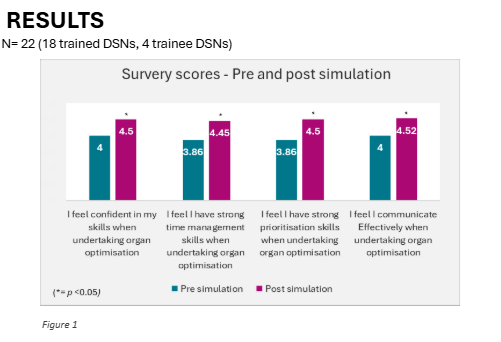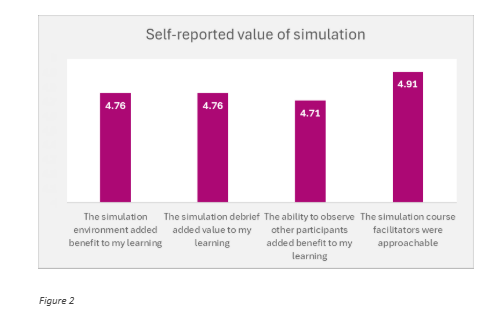Advancing donation specialist nurse proficiency through high-fidelity simulation: An innovative training approach
Monique Drury1, Ciara McGuigan1, Jess Amsden1, Madhu Raman1, Indra Gramnea 1.
1DonateLife Victoria , Carlton , Australia
Introduction: In 2024, DonateLife Victoria (DLV) launched a pilot program integrating high-fidelity simulation training into DSN professional development. Donation Specialist Nurses (DSNs) play a crucial role in organ donation processes but often face challenges in skill development and reinforcement due to the infrequency and unpredictability of donation case exposure. High-fidelity simulation has emerged as an effective training method to bridge this gap, offering immersive learning experiences that enhance clinical decision-making, communication, and confidence in a high-stakes environment.
Methods: Partnering with St Vincent’s Hospital Education and Learning Centre, DLV facilitated eight half-day simulation sessions, engaging 22 DSNs (18 trained, 4 trainees). Originally designed for novice DSNs, the pilot program was expanded to include all DSNs, recognising the broad benefits of simulation in skill development and confidence. Participants rotated through roles as active participants and observers in three realistic scenarios, each designed to simulate real-world donor assessment and communication challenges encountered by DSNs. Each 15-minute scenario was live-streamed to observers and followed by a 30–40 minute debrief for reflective learning. The key learning objectives for each scenario were donor assessment, organ optimisation, time management, and effective communication. A structured pre- and post-training survey assessed changes in self-reported confidence across the key learning objectives using a 1–5 scale (1 = strongly disagree, 2 = disagree, 3 = neutral, 4= agree, 5 = strongly agree), with paired T-tests measuring statistical significance.
Results: Post-simulation data demonstrated a statistically significant increase in self-reported confidence across all key learning objectives—organ optimisation, time management, prioritisation, and communication (p<0.05).

Participants overwhelmingly recognized the value of simulation, with 4.91/5 reporting benefits from the simulated environment, 4.76/5 appreciating the structured debrief, and 4.71/5 valuing peer observation.

Conclusion: High-fidelity simulation enhances DSN proficiency by addressing gaps in case exposure and fostering essential clinical skills. The significant increase in self-reported confidence of this pilot reinforces the role of simulation training in continuous professional development. Moving forward, DLV aims to expand scenario complexity and further evaluate competency shifts through pre- and post-simulation assessments, ensuring ongoing advancements in DSN capability and organ donation practices.
[1] Training
[2] Education
[3] Simulation